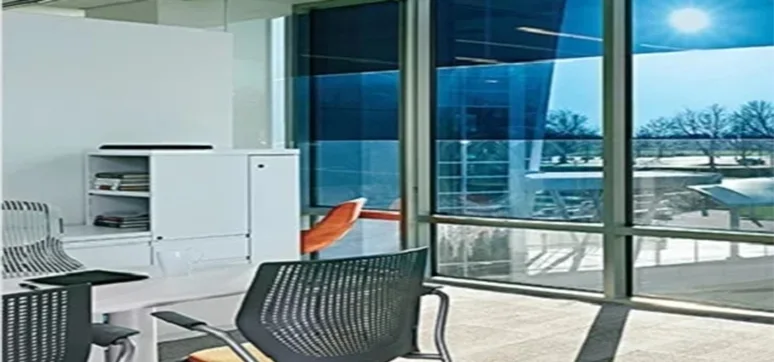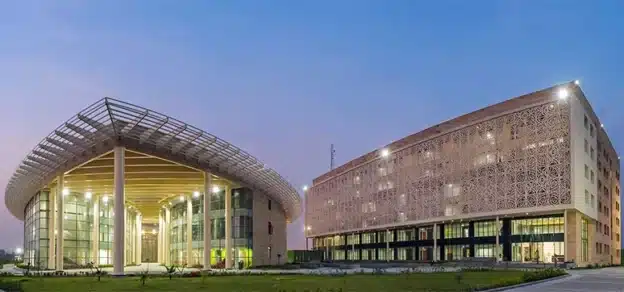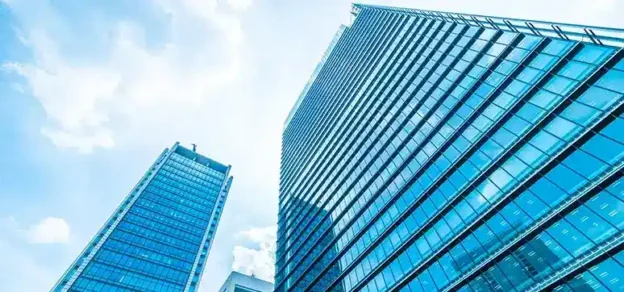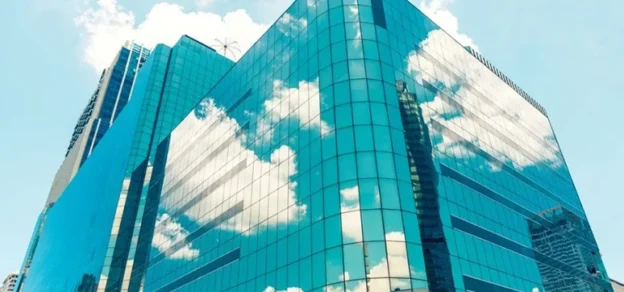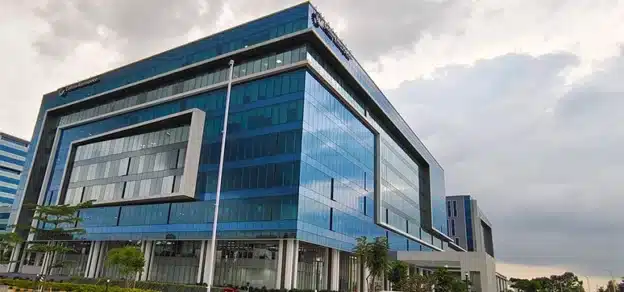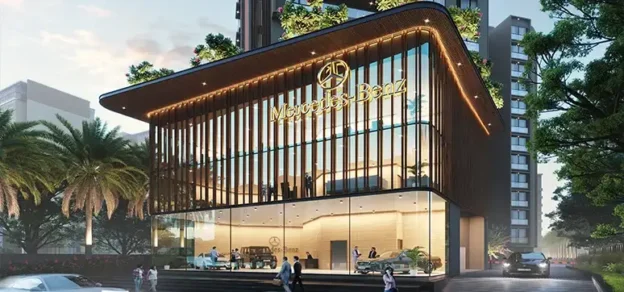From very early on, man has been living outdoors and has evolved to need exposure to sunlight for our health and well-being. With the advent of architecture, man has sought means of replicating this natural light, and has developed artificial lighting to provide lighting on demand. Such invention has freed us from daylight dependence and has transformed the way we live and build. Today, we spend around 90 per cent of our time in enclosed spaces, lit with fluorescent light, because of which daylight harvesting has been progressively neglected.
It is only recently that scientists have started to understand how light influences our body and mind. In addition to the cells that contribute to the formation of images, our eyes also contains cells responsible for the so-called “non-visual effects” of light. Those cells are light-sensitive and key for the regulation of several of our biological functions such as sleep, mood, alertness etc. A lack of daylight exposure at the right time or too much of the wrong colour light at the wrong times can thus cause several disorders, both in the short term and long-term.
The Importance of the Built Environment for Human Health
Recent research, particularly in “biophilic design” has also stressed out the role of connection to nature in supporting our health and well-being, which can be achieved through external views. And those also play a key role in our satisfaction with the built environment, since it also depends on information not related to the task in hand, such as the hour of the day, the seasons, the weather etc.
Today, there is a vast scientific literature demonstrating both the negative impact of poorly day lit and view-less spaces on day-to-day mood, job satisfaction, and even health, and alternatively the benefits of daylight and associated views in most building use types. Studies cover all building use types, such as hospitals, schools, offices and even retail spaces.
A recent report from the World Building Green Council (2014) has shown that there is an “overwhelming evidence” that demonstrates the design of an office significantly impacts the health, well-being and productivity of the employees. It reveals that unadapted indoor temperatures could result in a reduction in performance by 4 to 6 per cent, and that workers with windows sleep an average of 46 minutes more per night.
Moreover, since the employees’ salaries and benefits can be responsible for 90 per cent of an organisation’s expenditure, designing “green”, day lit and comfortable spaces has also become a real opportunity for owner-occupiers, developers and tenants for value creation.
A Real Design Challenge
Given the findings described previously, one understands the importance of putting humans at the core of one’s design strategy. Green building certifications such as LEED, BREEAM in the UK, HQE in France, all recognize that a sustainable design is not just about energy efficiency and all the integrated sections related to indoor environment quality. Those include, for example, access to natural light, quality views through windows, protection from glare and thermal comfort. However, all those criteria could be very difficult to achieve at the same time through a conventional static building envelope that cannot adapt to the changing exterior conditions.
Today, interior shades, mostly manually controlled, are often used to protect occupants from glare; however, their effectiveness in preventing overheating issues is very limited. Plus, using manual blinds can also be detrimental to the space’s energy and human factors performance, since they usually remain lowered long after the initial disturbance has gone. In that case, the space can no longer benefit from passive heating nor daylight harvesting, resulting in higher heating and electrical lighting needs and the needed views and daylight exposure for occupants are also lost. Many studies have shown that people are not active blind users and blinds are moved infrequently and are often left pulled, covering the majority of the window area, especially the top of the window which is the most effective for daylighting.
Automated, exterior blinds constitute the state-of-the-art dynamic solution to protect from both, excess of light and heat, and because of automation can help optimize the trade-off between glare control, daylight admission and energy performance. Yet, once in the down position, the potential benefits of daylighting and views are offset. In addition, those system cannot be used in certain weather conditions and require on-going maintenance.
In addition, the role of windows, and more importantly the amount of glass that should be used, has been questioned back along with the increasing stringency of building energy efficiency targets in Europe and indeed globally. Due to their lower insulation performance and higher solar heat gain compared to an opaque wall, windows are indeed often seen as the weak link in the building envelope, leading to an increasing trend to reduce window area over the last few years. And with the target set by 2010 Energy Performance of Buildings Directive (EPBD) to achieve nearly zero-energy buildings by 2020 in Europe, the pressure for energy efficiency use has never been so strong, and hence the impact on glass use.
The recent research findings regarding non-visual effects of light has risen back awareness on the importance of daylight and views for people, and pushed designers and builders back to consider daylight and views as key design parameters. Some European countries have already introduced a daylight factor and minimum glazing requirements within their national construction regulations such as UK and France. However, the debate still continues, even when it comes to defining standards on daylight and lighting in buildings.
Considering all the factors described above, creating energy efficient and comfortable day lit spaces could thus be a significant design challenge, schematically represented.
An Elegant Response to the Sustainable Design Challenge

An elegant solution in response to that design challenge is the Electrochromic (EC) dynamic glass, which enables to control the amount of visible light and solar heat gain entering a space, over a large range that varies between 60 per cent and 1 per cent in visible light transmission and 0.40 to 0.05 in solar g-factor, as shown in Figure 1. The modulation of light and heat can be controlled through building automation system, or at the touch of a button, so as to dynamically adapt to the external climatic conditions and occupants’ needs, with no moving parts. EC coatings can be integrated in double or triple glazing units, with a second low emissivity coating to meet the specific insulation requirements (see Figure 2).

With such specificities, Electrochromic Glass can have a significant impact on reducing the energy bill. During the heating season, EC glass reduces the need of heating by providing passive solar gains when clear. During the cooling season, it minimizes the cooling loads when tinted. It also allows optimum use of the daylighting during all year long, limiting the use of electrical lighting. Past studies done for the European climates have shown that the EC glass could save up to 34 per cent in cooling loads and 29 per cent in electrical lighting use. Note that automatically continuously dimming lighting controls should be used in combination to Electrochromic Glass (EC) to achieve maximum savings.
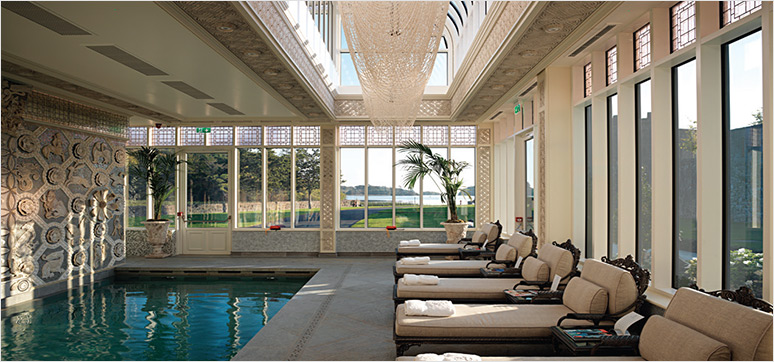
In terms of occupant comfort, EC glass is also able to manage efficiently glare issues without using blinds. Indeed, past studies have shown that 1 per cent visible light transmission is required to be able to control extreme glare situations effectively. However, the view and connection with the outside world is preserved, providing the occupant an enhanced indoor comfort.
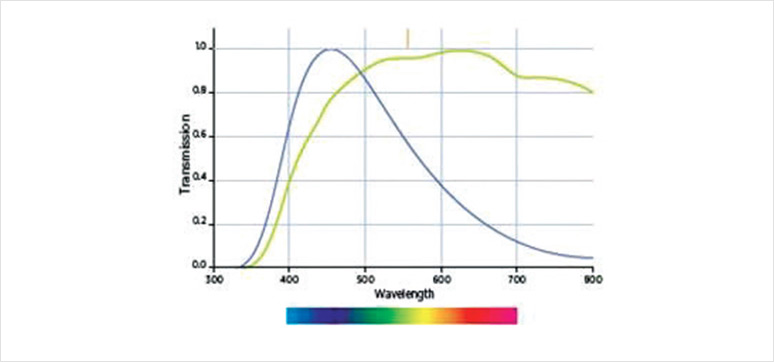
As previously mentioned, the quality of light is also part of the equation of our satisfaction with the visual environment, which implies a good colour rendering. That aspect is also key to defining the atmosphere of a space. Although EC glass tends to appear blue-grey coloured when tinted, studies have confirmed the empirical observation that the light in spaces equipped with EC glass is essentially the same as in spaces glazed with clear glass, as long as a small proportion of the glass is kept in the highest transmittance state.
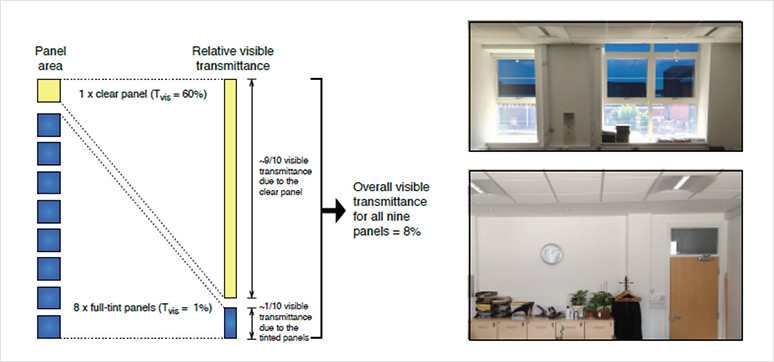
Figure 4 shows the spectral power density of the light coming through EC glass in the fully clear and fully tinted states. As can be seen, the flat nature of the spectrum of light coming through the clear state demonstrates that the spectrum of daylight is not significantly altered. However, light transmitted through the fully tinted state takes on a blue hue, as shown by the peak at around 450 nm.
The conservation of colour neutrality when the Electrochromic Glass is appropriately zoned can be explained by the fact that the Electrochromic Glass (EC) glass area in the clear state is responsible for the majority of the light coming in the space, since it transmits 60 per cent of the light, while the tinted state only transmits 1per cent. Since light passing through the clear state remains essentially neutral, and assuming good light mixing, the overall illumination of the space appears essentially neutral. Figure 5 a shows the resultant spectral power densities of light coming through combination of differently tinted Electrochromic Glass zones. Figure 5b shows pictures of the office room where the study was conducted and the resulting light colour.
In contrast to static facade with mechanical alternatives, by using EC glass, the benefits of daylighting are not outweighed by the problems of overheating and glare. This, thus allows designers to use more glass to reach the daylight harvesting potential, maintain exterior views, and meet their aesthetics and design desires, without energy or comfort penalty.
New Developments in Dynamic Glass
Since its first commercialization in the U.S. market in the early 2000s, electrochromic glass has undergone significant developments, especially in the last couple of years. These developments have allowed architects higher design flexibility, while providing the optimum balance between energy performance and comfort. Among the key improvements are:
- Increased size availability (up to 1.50m x 3.05m)
- Availability of a range of exterior colours (neutral, green, blue, grey, bronze) for architects to choose from to match their project colour aesthetic (see Figure 6)
- Improved reflected colour characteristics
- Visible light transmittance down to 1per cent inthe fully tint state, for effective glare control
- New geometric shapes (e.g. triangles, see Figure 10), giving architects additional design freedom
- Ability to control independently up to three different areas of a single EC glass pane as different segments (see Figure 7)
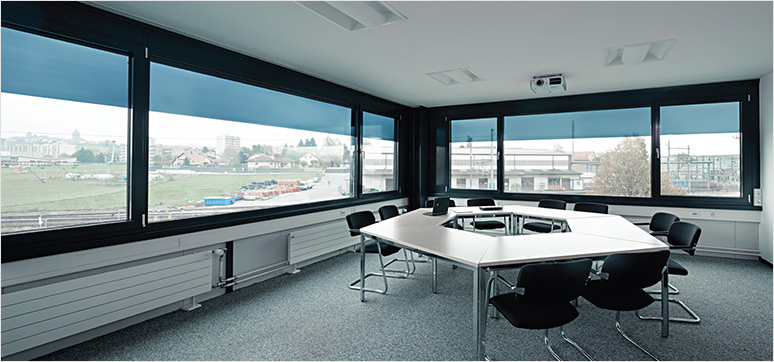
The latest so-called in-pane zoning characteristic is essential in the case of façades using single large panes to span most or all of the floor to ceiling height in order to effectively co-optimize glare control, daylight admission, light colour quality and energy performance. Indeed, effective glare protection requires the glass to tint at 1%T, however this could be counter productive in terms of daylight admission and light colour quality, if the whole façade is fully tinted. With the ability to tint several zones within a pane to different transmission states, glare can be managed through fully tinting one fraction of the EC glass, while allowing sufficient daylight admission and managing colour quality by leaving the remaining parts in intermediate and clear states. With this new in-pane zoning characteristic of EC glass, optimized performance across multiple parameters can thus be achieved, without the need of adding mullions in the framing system.
Conclusions
Electrochromic Glass( EC) glass has the potential to provide a steep change in the way architects design buildings. While sustainable design codes and certifications increasingly highlight the importance of providing daylight and views, yet doing so often requires a trade-off between energy performance and occupants’ thermal and visual comfort.
Dynamic glass provides the ability to adapt the incoming heat and light to the occupant’s needs, while simultaneously maintaining access to views and a connection to the outside world, freeing the architects from the constraints enforced by the conventional building envelopes when balancing architectural design with occupant comfort and energy efficiency. They allow designing well-day lit spaces, by achieving energy efficiency goals without continuing down the path of reducing window area.
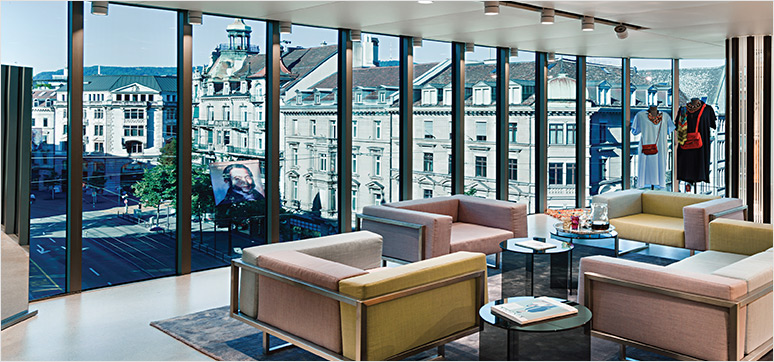
The new developments in dynamic glass aesthetics and functionality described here, such as the capability of providing higher volumes of glass for larger building applications, improved exterior colour aesthetics, and in-pane zoning, as well as the case studies presented, demonstrate that EC glass can provide a really elegant façade solution to meet the “green building challenge”, i.e. achieving high energy performance, daylight harvesting and views, without compromising occupant comfort or the aesthetics of the façade design.
With the increasing stringency in energy efficiency targets and the progressive integration of “human” centric aspects in the sustainable construction standards, the interest and adoption of EC glazing technology is growing rapidly, and is on a path to becoming a standard sun management solution in the market.
